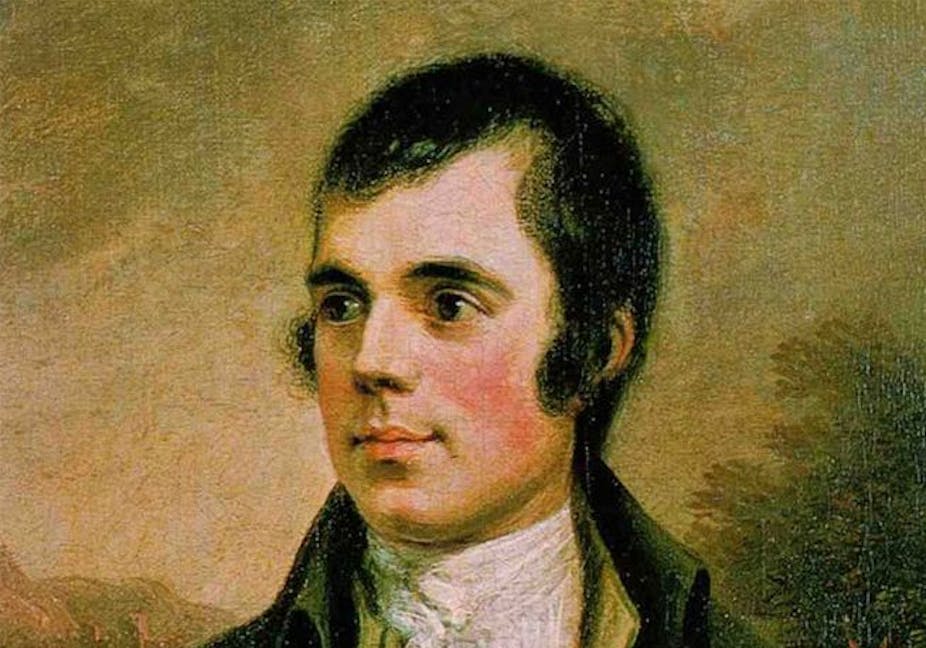On 25 January, people all over the world will congregate to feast upon a spicy sheep’s stomach – but not before they’ve recited a poem in its honour.
The occasion is Burns Night, the poem is Robert Burns’s Address To a Haggis, and this weekend’s festivities may take on a unique historical significance in the decades ahead: 2014 is, of course, the year of the Scottish Independence referendum. Since the 19th century, Burns Night has unofficially served as Scotland’s national day. If Scotland does gain its independence, it’s fair to say that people won’t look at a spicy sheep’s stomach in quite the same way ever again.
But if Scotland does vote Yes this September, what I will be interested to discover, as a Burns scholar who has lived his entire life in England, is whether people south of the Tweed will develop a new curiosity about Burns’s poetry. It’s a strange paradox that while Burns Night continues to grow in popularity in England, the works of the poet himself remain neglected on English school syllabuses and university reading lists. The owners of the restaurant down the road from where I live in Sheffield were so excited about Burns Night that they had it 15 days early. Even so, this enthusiasm doesn’t seem to translate into a desire to read the poet: Burns is rarely spotted on the shelves of the local high street bookshops (or what is left of them).
The reasons for Burns’s under-representation in English educational institutions have been rehearsed elsewhere. And, needless to say, I find the arguments for why English people should read Burns’s poetry much more compelling than the explanation for why English people don’t read his work. So here is a list of Three Reasons Why a Robert Burns is for Life, Not Just for Burns Night.
His gymnastic multi-lingualism
Burns is famous for writing in the Scots language, but Scots was just one of the many languages and dialects at his disposal. His poems leap from formal to informal English and from the regional dialect of his native Ayrshire to the artificial, literary language of his Scots predecessors.
But Burns’s uniqueness doesn’t lie in the fact of his multilingualism; rather, it lies in the way he uses different varieties of writing to confound your expectations of what is linguistically normal. Have a look at the first few lines of his epistle To William Simson, Ochiltree. Simson had sent Burns an excessively flattering letter; Burns suspected a prank, and this was the first stanza of his reply:
I gat (got) your letter, winsome Willie;
Wi’ gratefu’ heart I thank you brawlie (very much);
Tho’ I maun (must) say’t, I wad (would) be silly,
An’ unco (very) vain,
Should I believe, my coaxin billie (wheedling fellow),
Your flatterin’ strain.
It’s hard to keep up with this sentence, with its minute and labyrinthine movements between Scots and English. What starts off as the recognisable English expression “I thank you”, for instance, flips to Scots at the last moment with the addition of “brawlie”. Burns switches between languages for all kinds of reasons. Here, I think, it’s bound up with the curious way in which he alternates between brutal frankness and elaborate politeness. These kinds of inconsistencies invite Simson to doubt Burns’s sincerity: to wonder if the pranker has now become the prankee. Burns’s slippery approach to language keeps Simson – and us – guessing.
Burns shaped Romanticism
Nigel Leask, the author of a 2010 study of Burns, has argued in a recent article that the poet’s work (and that of his editors) “profoundly shaped the development of British and Irish Romanticism”.
Burns’s influence is present when Wordsworth celebrates the language of low and rustic life. It is there when Keats claims that “beauty is truth, truth beauty”; it was at the grave of Burns in Dumfries that Keats realised the job of the poet was to capture “the real of beauty”, as a sonnet he wrote there makes clear. And it is there in Byron’s poetry, in its strange mix of earnestness and irony, and its complex tonal modulations.
He got there before the magic realists
Thomas Carlyle said of Burns that “the Song he sings is not of fantasticalities; it is of a thing felt, really there”. This has always struck me as a strange thing to say about a poet whose works feature talking sheep. Yet the image of Burns as a writer who simply recorded what he saw around him was an especially pervasive one in the Victorian period. There is perhaps a grain of truth in what Carlyle says, insofar as Burns’s poems – even the ones featuring speechifying ewes – offer an incredibly vivid picture of the practices, customs and material objects of the Ayrshire countryside.
But Burns was always looking for the hidden points of overlap between the so-called real world and the magical, uncanny world he had first encountered in the supernatural tales told by his grandmother. Just as he does with different languages, Burns transforms both reality and stock supernatural tales by combining them in strange, unsettling and audacious ways. Perhaps the best example of this is ‘eath and Doctor Hornbrook’ in which Burns nearly gets into a drunken knife fight with the grim reaper, before sitting down with him for a friendly chinwag.
Bookmakers may currently be offering unfavourable odds for a Yes vote. I haven’t yet worked up the courage to enquire whether they would accept a bet on more people reading Burns’s poetry – but next year, as you tuck into your haggis, put your ear close to it. For if the spicy sheep’s stomach could talk it would tell you: Robert Burns is for life, not just for Burns Night.

